How Do You Add Decimals
How to add and subtract decimals
Jump to
Central points
-
To add or subtract decimals, an agreement of is useful.
-
The power to single digits makes this a quick way to become the total of a list of decimals.
-
In subtraction, may be necessary to complete the process.
How to add together decimals
To add decimals:
-
Write the numbers in a vertical listing, lining upwardly the decimal points.
-
If the numbers take a different amount of digits, there may be some gaps in the columns. Fill in any gaps with a zero then that each number has the same number of decimal places.
-
Add a decimal signal in the respond space, lined up with the others.
-
Kickoff at the correct, the column with the least . Add the digits in the column.
- If the total is less than 10, enter the digit in the answer space.
- If the total is 10 or more, enter the units digit in the answer space for the column and carry the tens digit to the next column on the left.
- Motion left to the next identify value column. Add together the digits in the cavalcade and add together any digit that was carried to this column. Repeat the addition process in each column until the calculation is complete.
Examples
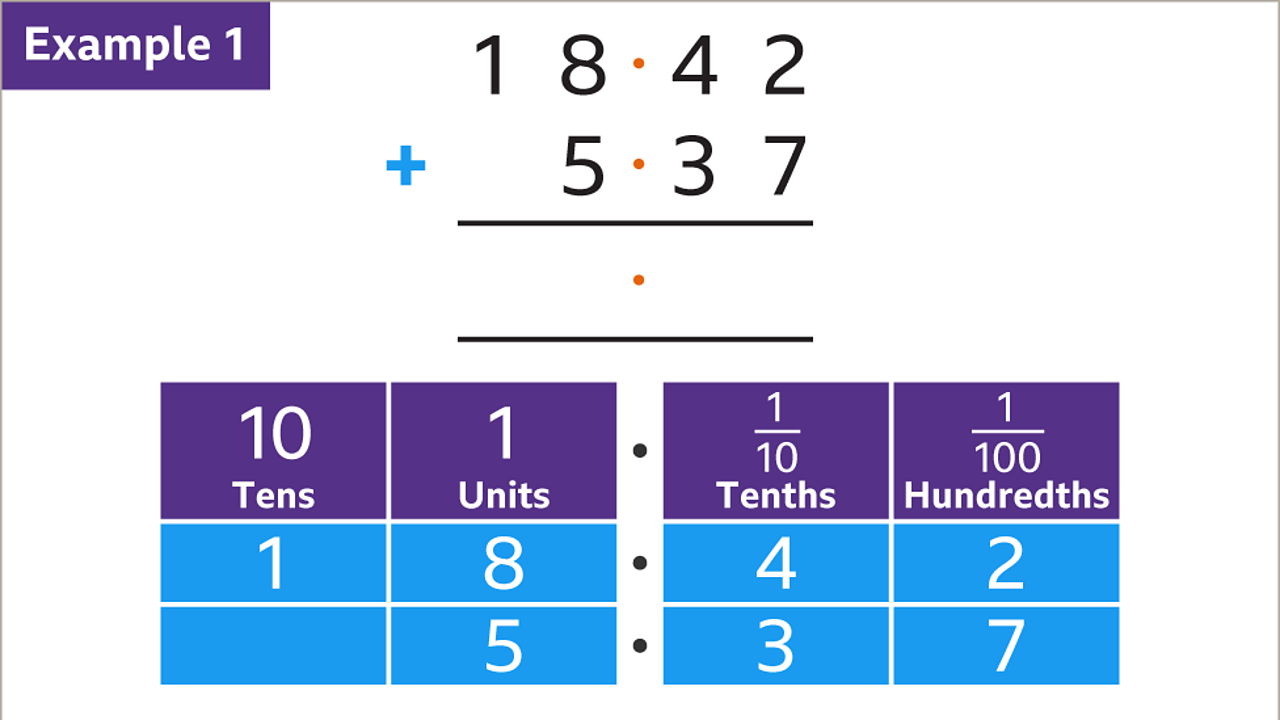
Add 18∙42 and 5∙37. Write the larger number (18∙42) above the smaller number (5∙37) in a vertical list, lining up the decimal points. Draw an answer space with two lines. Add a decimal bespeak in the answer infinite.
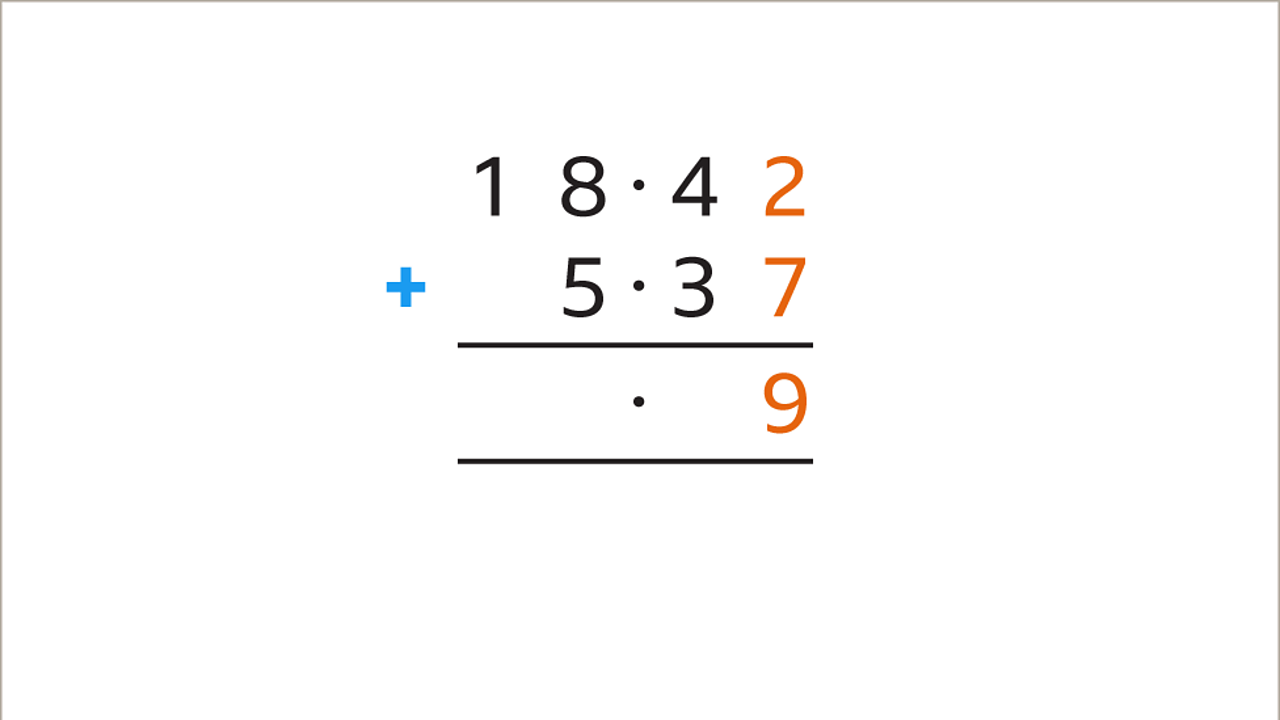
Outset at the column on the right, with the least place value. This calculation is in the hundredths column. Add the digits in the column (2 + seven). The total (9) is less than 10. Enter the digit (9) in the answer space for the cavalcade. Motility left to the side by side cavalcade.
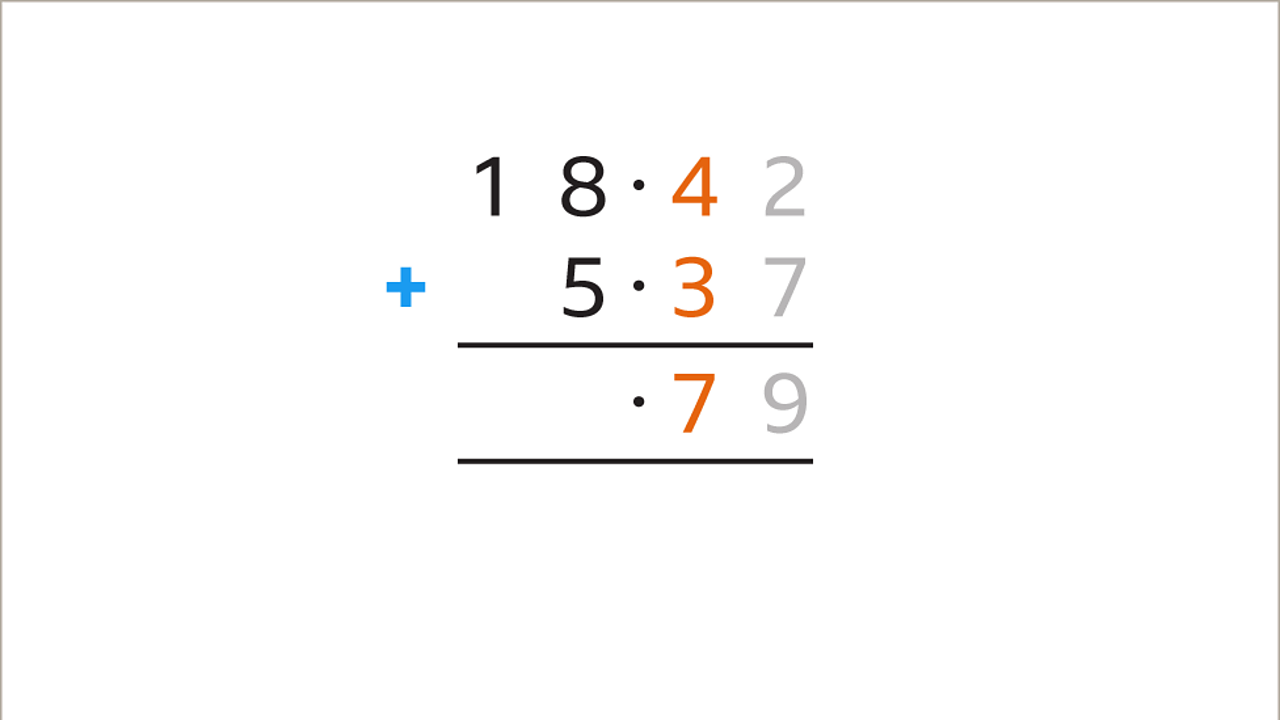
Add the digits in the tenths column (4 + iii). The total (7) is less than 10. Enter the digit (7) in the answer infinite for the column. Move left to the next cavalcade.
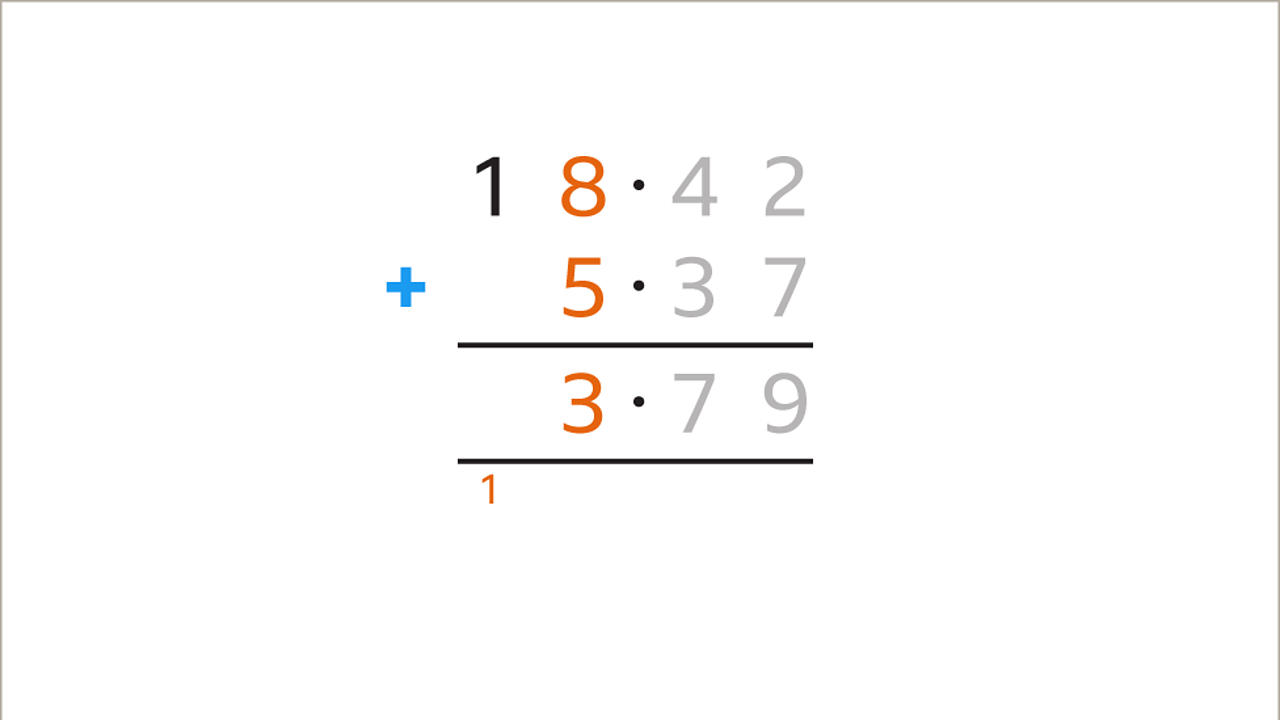
Add the digits in the units column (viii + five). The total (13) is greater than 10. Enter the units digit (3) in the respond infinite and bear the tens digit (1) to the next column. Move left to the next cavalcade.
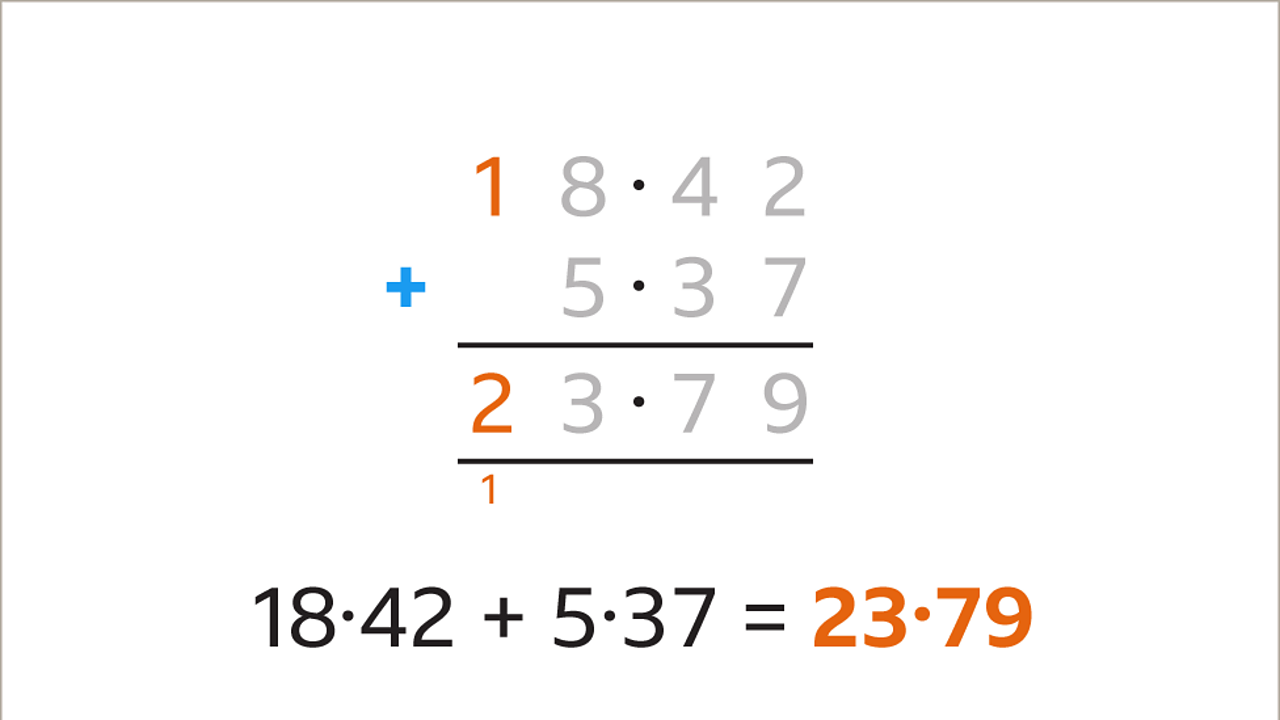
Add the digits in the tens column (1) and add the carried digit (i). The full (ii) is less than ten. Enter the digit in the answer infinite. The adding is complete: 18∙42 + 5∙37 = 23∙79
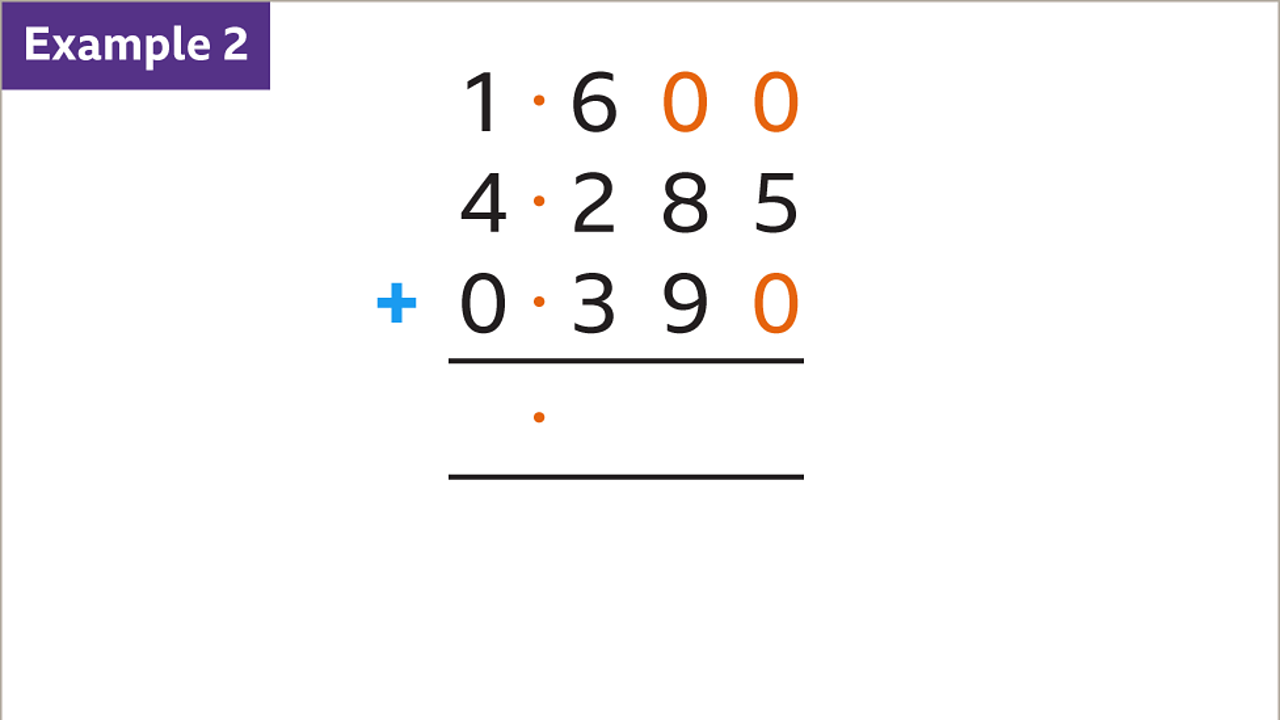
Sum 1∙half dozen, 4∙285 and 0∙39. Write the numbers vertically, lining up the decimal points. Fill in any gaps later the decimal point with zeros so that each number has the aforementioned number of decimal places. Draw an answer space with ii lines. Add together a decimal signal in the answer space.
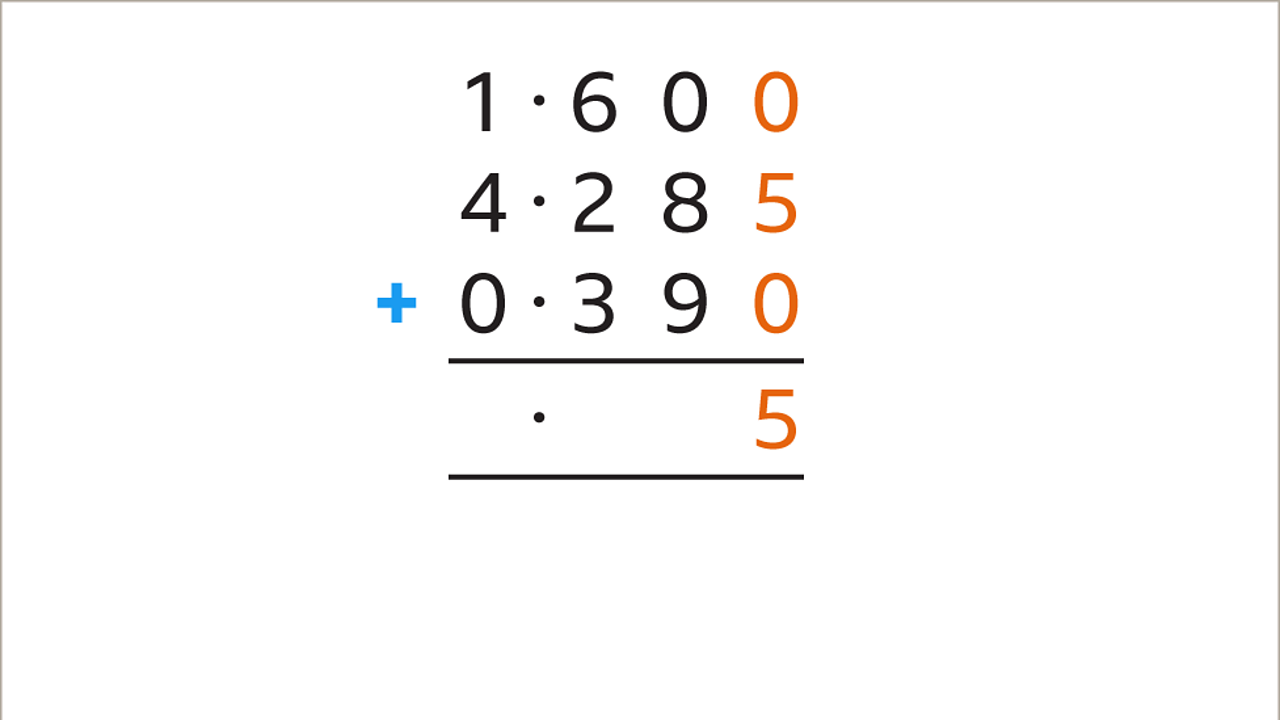
Kickoff at the column to the right, with the least place value. The calculation is in the thousandths column. Add the digits in the column (0 + 5 + 0). The total (5) is less than 10. Enter the digit (5) in the answer space. Move left to the adjacent column.

Add the digits in the column (0 + eight + ix). The total (17) is greater than 10. Enter the units digit (7) in the respond space and carry the tens digit (1) to the next column. Move left to the next cavalcade.
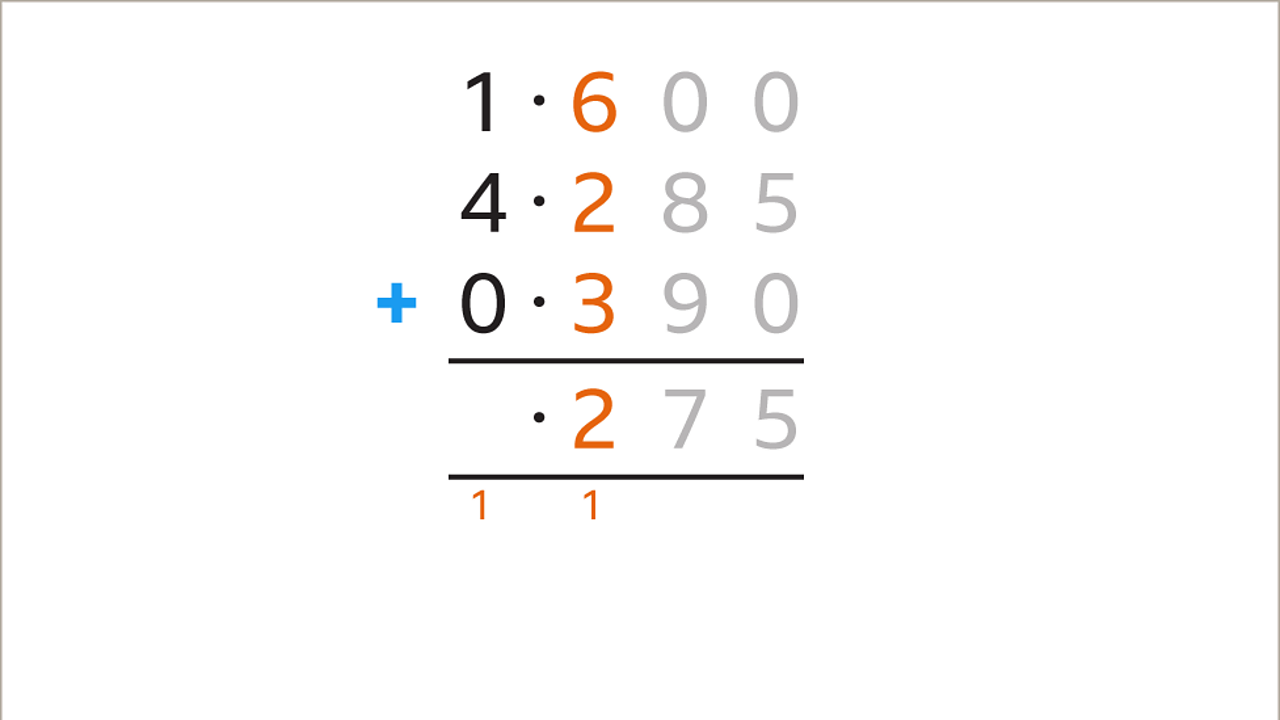
Add together the digits in the column (6 + 2 + 3) and add the carried digit (ane). The total (12) is greater than 10. Enter the units digit (2) in the respond space and conduct the tens digit (1) to the next column. Move left to the next column.
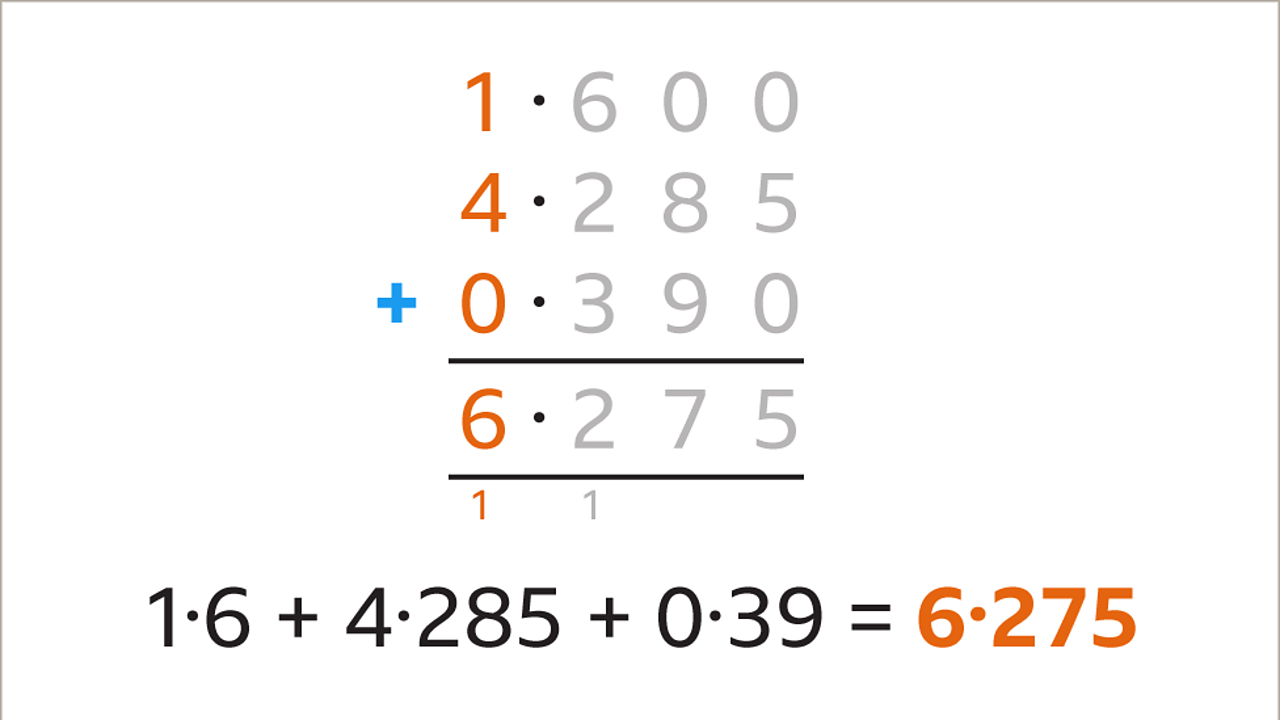
Add together the digits in the cavalcade (1 + 4 + 0) and add the carried digit (ane). The total (half-dozen) is less than x. Enter the digit (half-dozen) in the answer space for the column. The calculation has at present been completed: i∙6 + iv∙285 + 0∙39 = six∙275
Question
How to subtract decimals, including regrouping
To subtract decimals:
-
Write the larger number above the smaller number in a vertical list, lining up the decimal points.
-
Cavalcade subtraction works from correct to left.
-
Starting with the column on the right, the lesser digit is subtracted from the superlative digit and the reply is written in the reply infinite.
-
Motility left to the next cavalcade. Consummate this subtraction procedure for each cavalcade until the calculation is consummate.
If the superlative digit is smaller than the bottom digit, regroup the number. Regrouping is a process where groups of 10 are borrowed from one cavalcade and given to some other. It is besides known as exchanging.
Look through the examples to run across how to follow the regrouping process. The first example is a normal subtraction, while the second requires regrouping.
Examples

Subtract v∙1 from ix∙6. Write the larger number (9∙6) above the smaller number (five∙1) in a vertical list, lining up the decimal points. Draw an answer space with ii lines. Add a decimal point in the respond infinite.
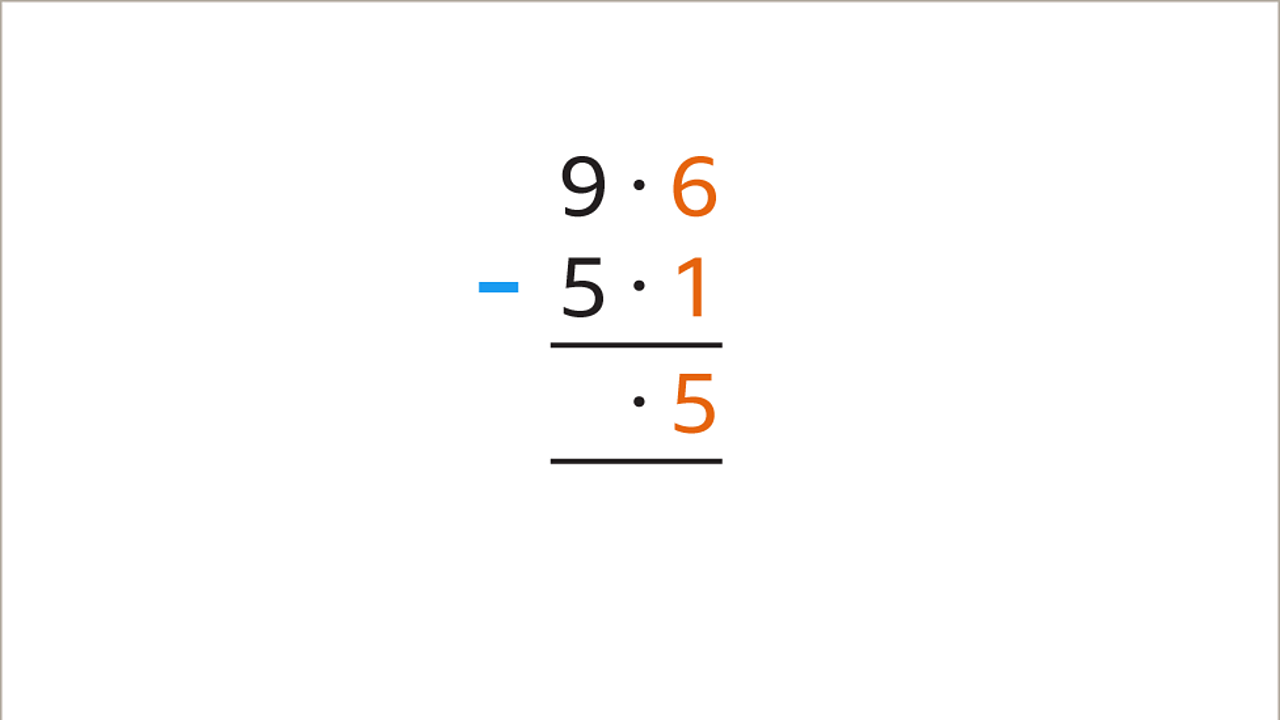
Showtime at the correct, the cavalcade with the to the lowest degree place value (tenths in this example). Decrease the bottom digit (1) from the elevation digit (6). The respond (v) is entered in the answer space for the column. Motility left to the next place value column.
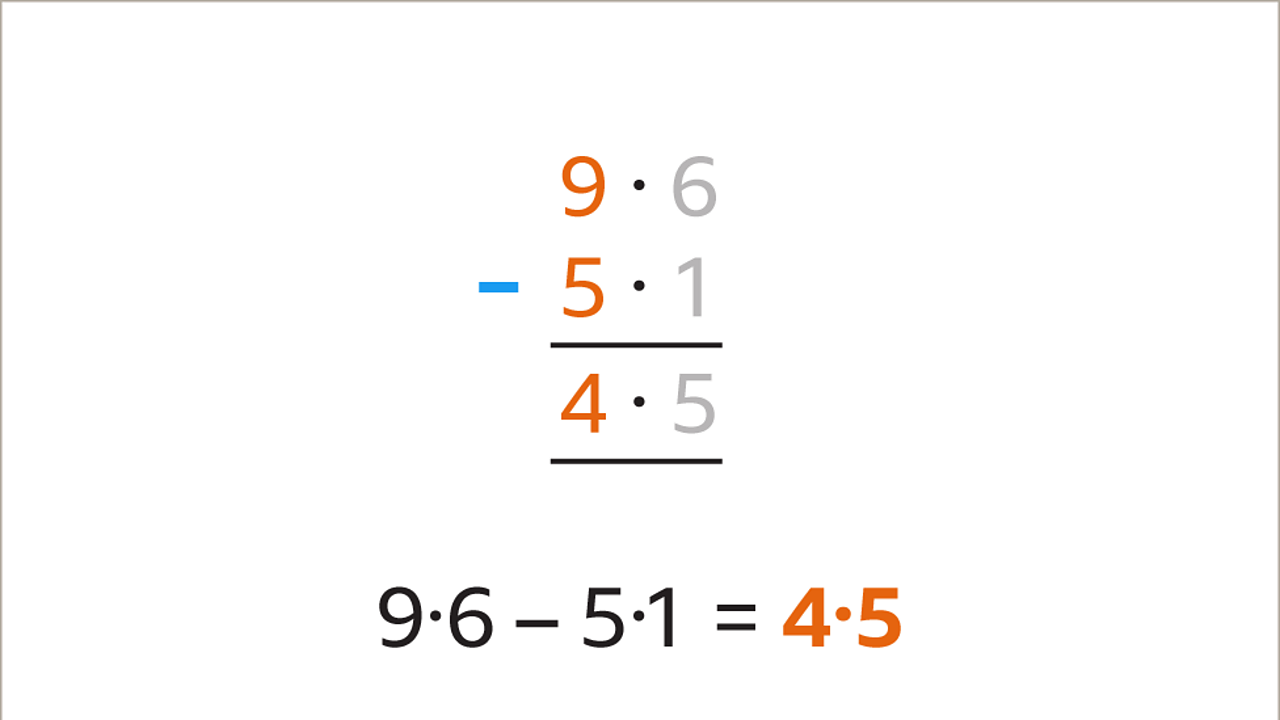
Subtract the bottom digit (5) from the top digit (9). The answer (4) is entered in the respond space. The calculation is complete. nine∙6 - 5∙1 = 4∙5
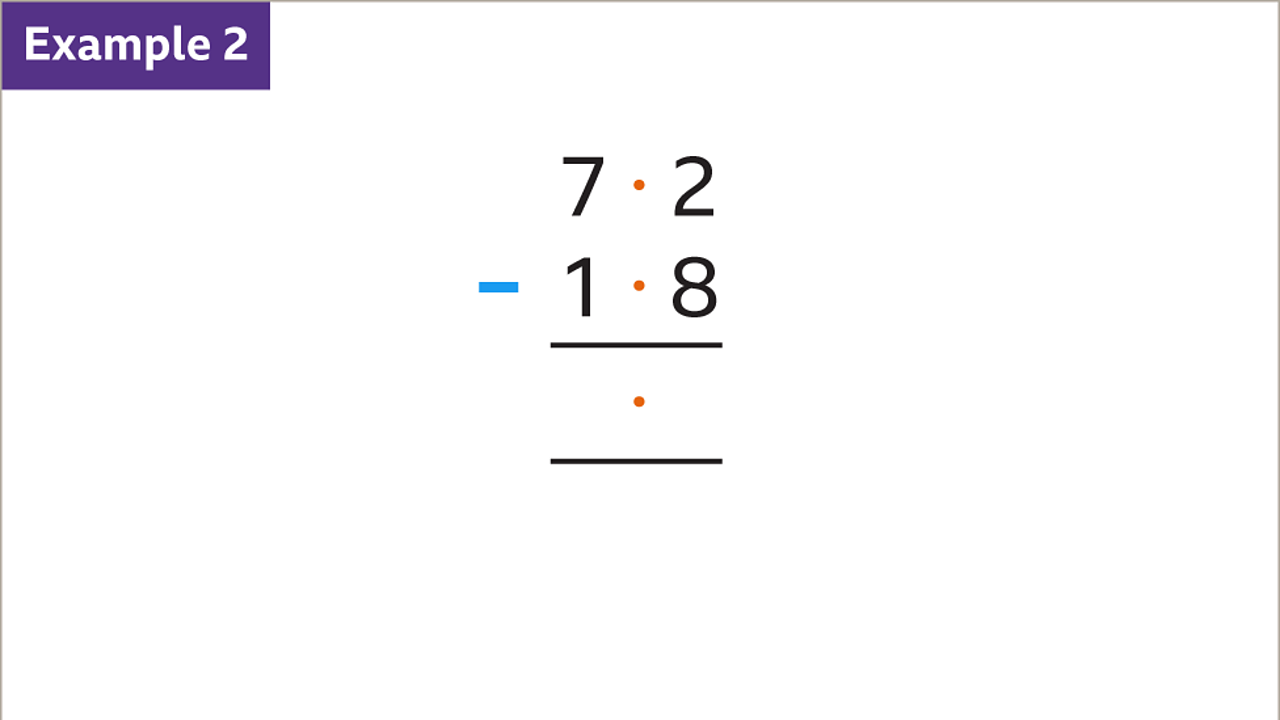
Subtract one∙8 from 7∙2. Write the larger number (7∙2) above the smaller number (1∙8) in a vertical list, lining upwards the decimal points. Depict an answer infinite, including a decimal bespeak.
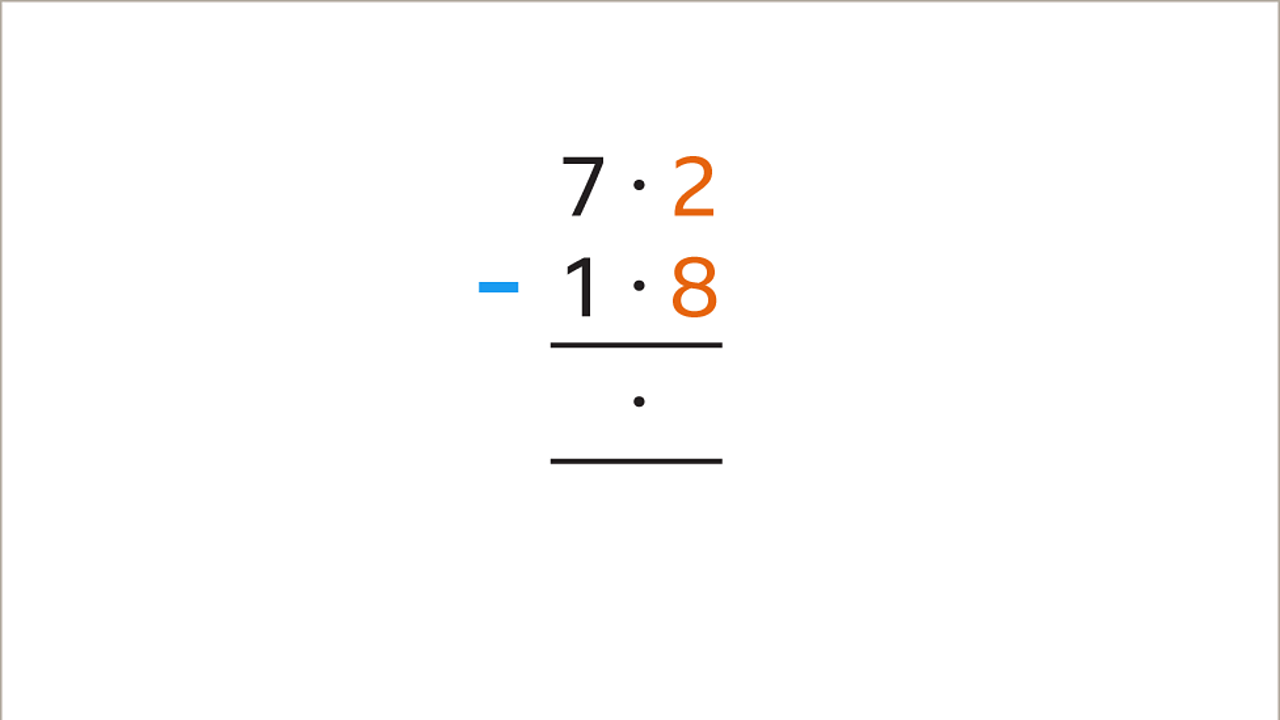
Start at the right, the column with the to the lowest degree place value (tenths in this example). The top digit (two) is smaller than the bottom digit (8). 2 tenths is less than 8 tenths. Regrouping of the peak number is needed.

Regroup the top number. 7∙two is 7 units and 2 tenths. More tenths are needed for the subtraction. Regroup and then that there are vi units and 12 tenths. Cantankerous out the 7 and write 6. Write a 1 in forepart of the ii to give 12. The subtraction can now be done.
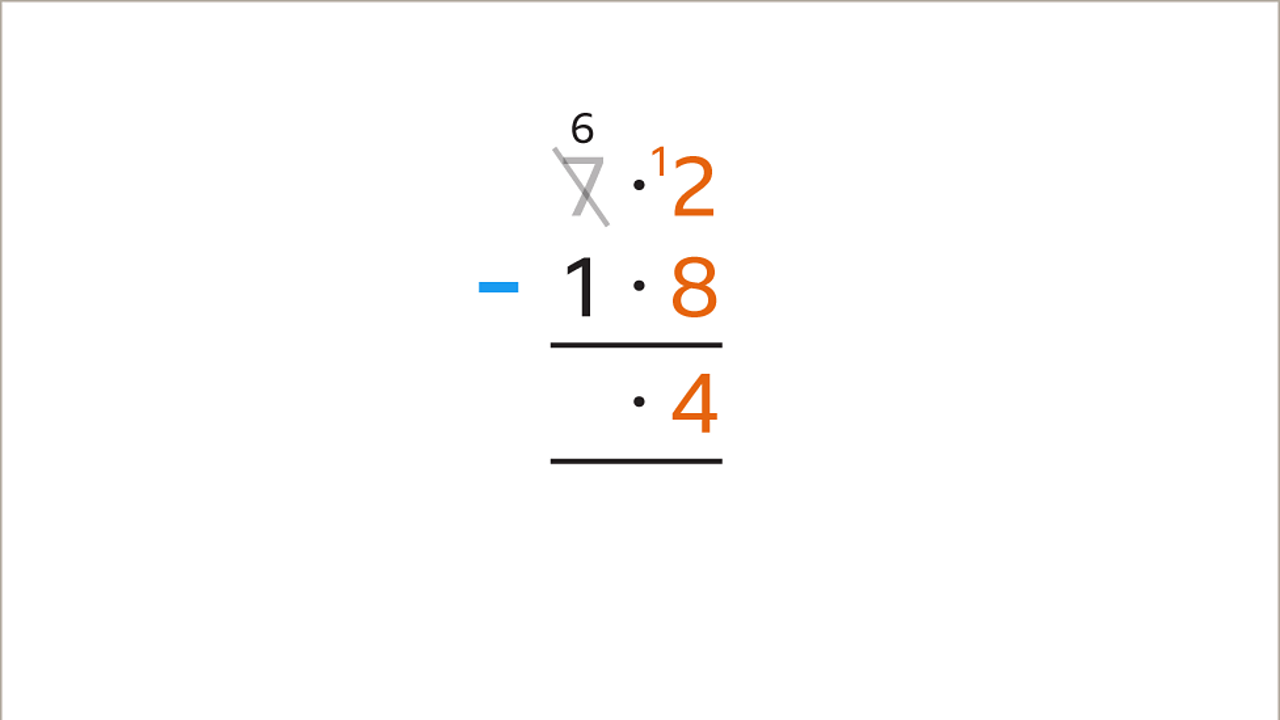
Subtract the bottom digit (8) from the top value (12). The answer (iv) is entered in the answer infinite for the column. Move left to the adjacent place value column.
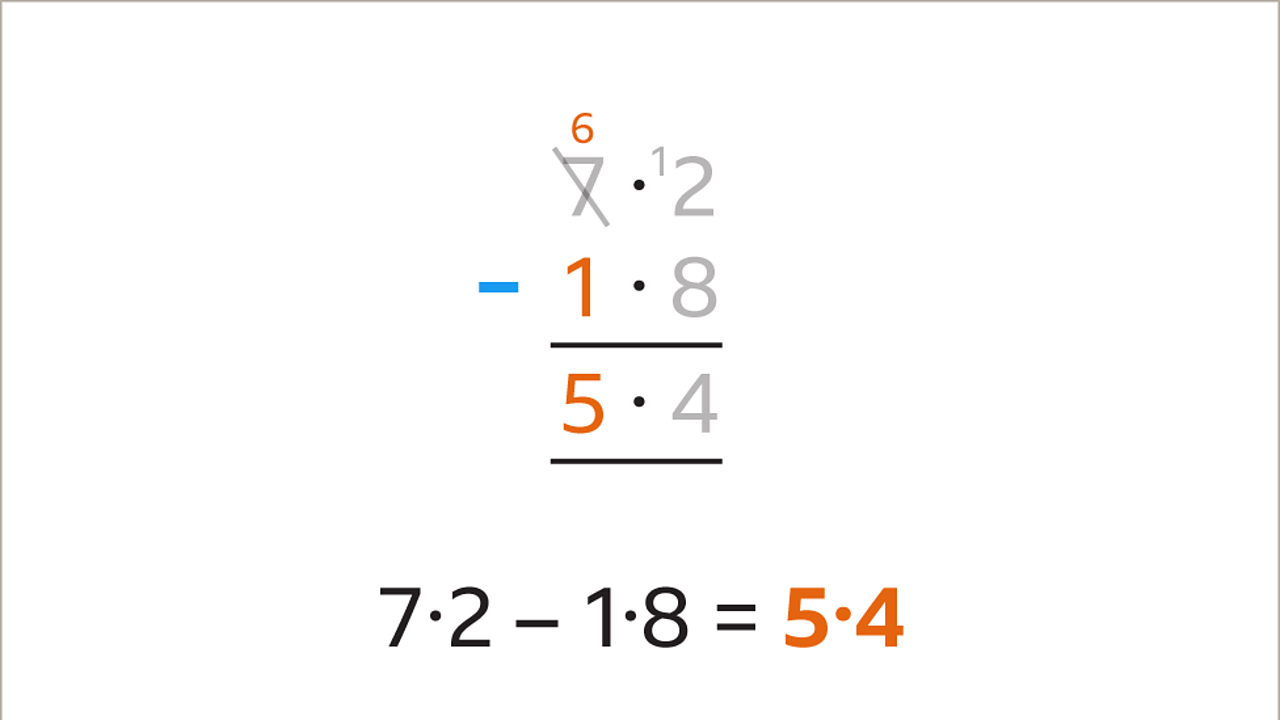
Decrease the bottom digit (1) from the height digit (half-dozen). The answer (five) is entered in the answer space. The calculation is consummate. 7∙ii – 1∙viii = five∙4
Question
Subtracting decimals, including regrouping beyond more than one column
To decrease decimals:
-
Write the larger number in a higher place the smaller number in a vertical listing, lining up the decimal points.
-
Fill in any gaps later on the decimal point with zeros and so that each number has the aforementioned number of decimal places. Add together a decimal bespeak in the answer space, lined upwardly with the others.
-
Start with the column on the right, the cavalcade with the least .
-
Subtract the bottom digit from the top digit.
-
When the superlative digit is greater or equal to the lesser digit, the reply is entered in the answer space.
-
When the top digit is less than the bottom digit, regroup the number to make the top digit bigger by 10. Sometimes regrouping is carried out across more than one column.
-
Move left to the next place value column.
-
Repeat the subtraction process for each column until the calculation is complete.
Examples
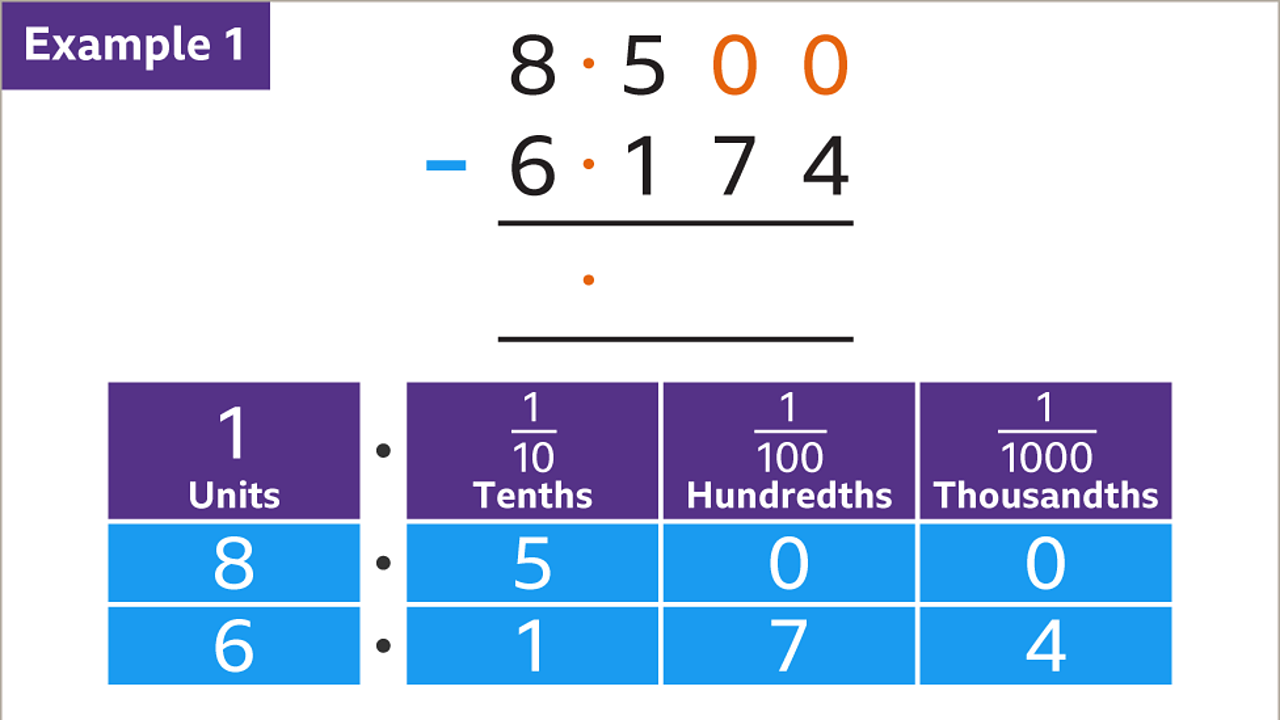
Subtract 6∙174 from viii∙five. Write the larger number (eight∙5) in a higher place the smaller number (vi∙174) in a vertical listing, lining up the decimal points. Fill up in any gaps after the decimal point with a naught so that each number has the same number of decimal places. Add a decimal point in the reply space, lined up with the others.
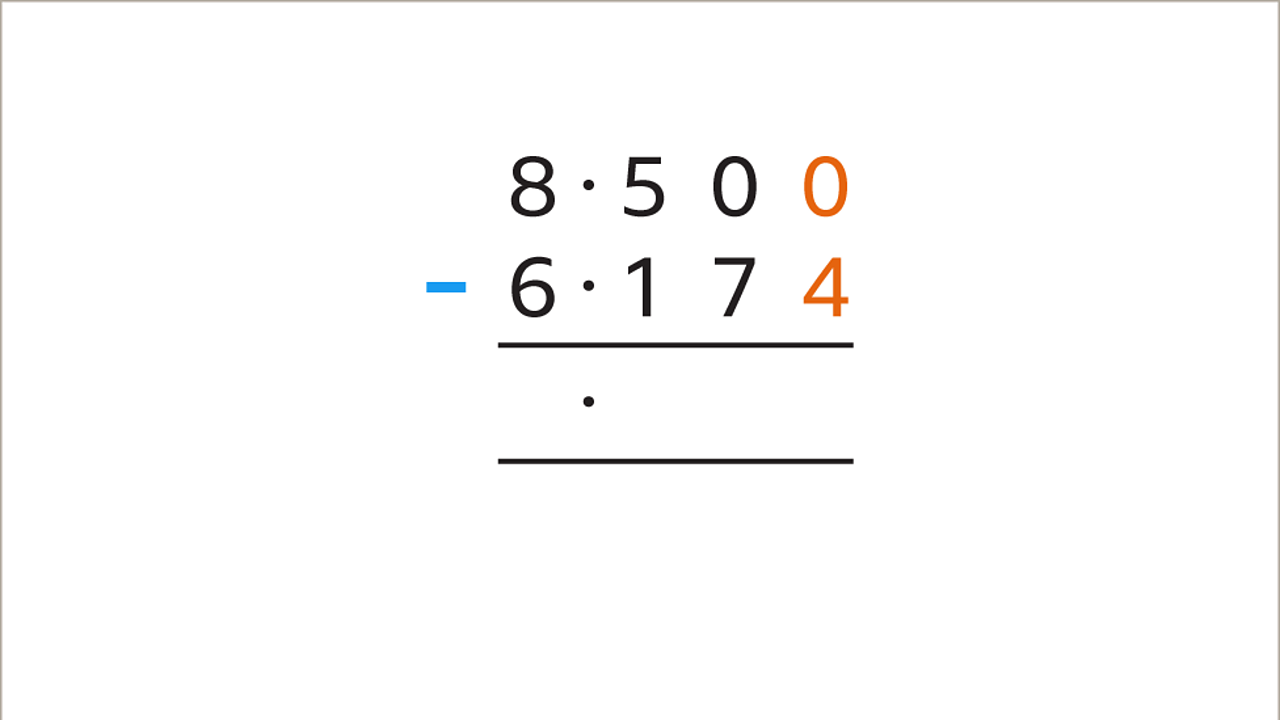
Start at the right, the column with the least place value (thousandths in this example). The meridian digit (0) is smaller than the bottom digit (4). 0 thousandths is less than 4 thousandths. Regrouping of the top number is needed.
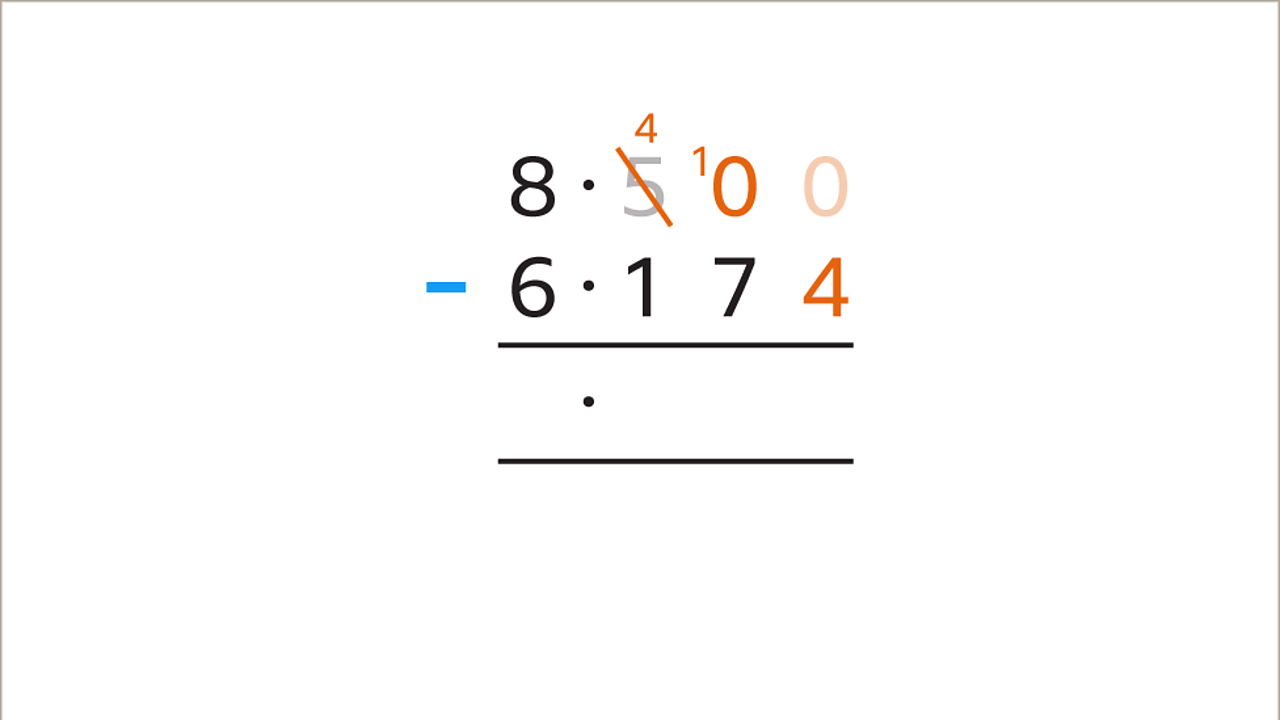
Regroup the top number. 8∙five is 8 units and v tenths. More thousandths are needed for the subtraction. Regroup and so that there are 8 units and iv tenths and ten hundredths. Cross out the five and write iv. Write a 1 in front of the 0 in the hundredths column to give 10. There are still no thousandths, so the number needs to be regrouped again.
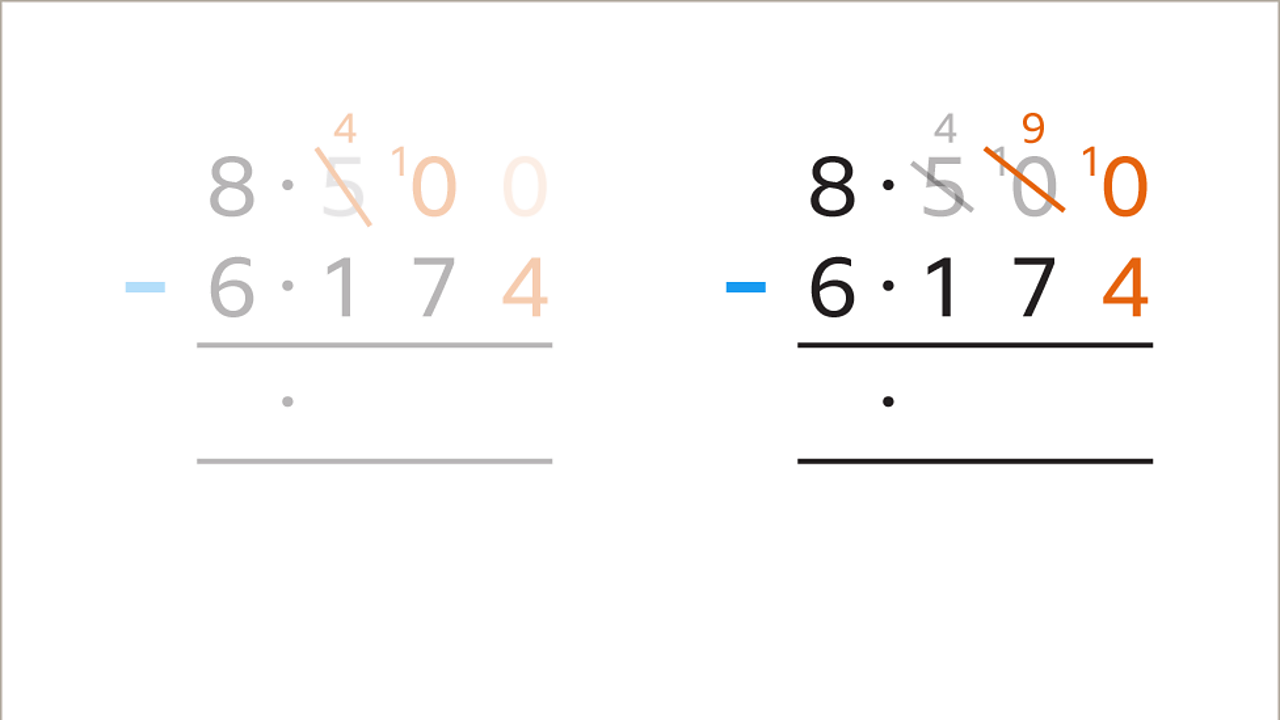
Regroup 8 units and 4 tenths and ten hundredths and so that there are 8 units and 4 tenths and nine hundredths and 10 thousandths. Cross out the ten and write 9. Write a one in front end of the 0 in the thousandths column to give x. There are now enough thousandths for the subtraction to be candy.
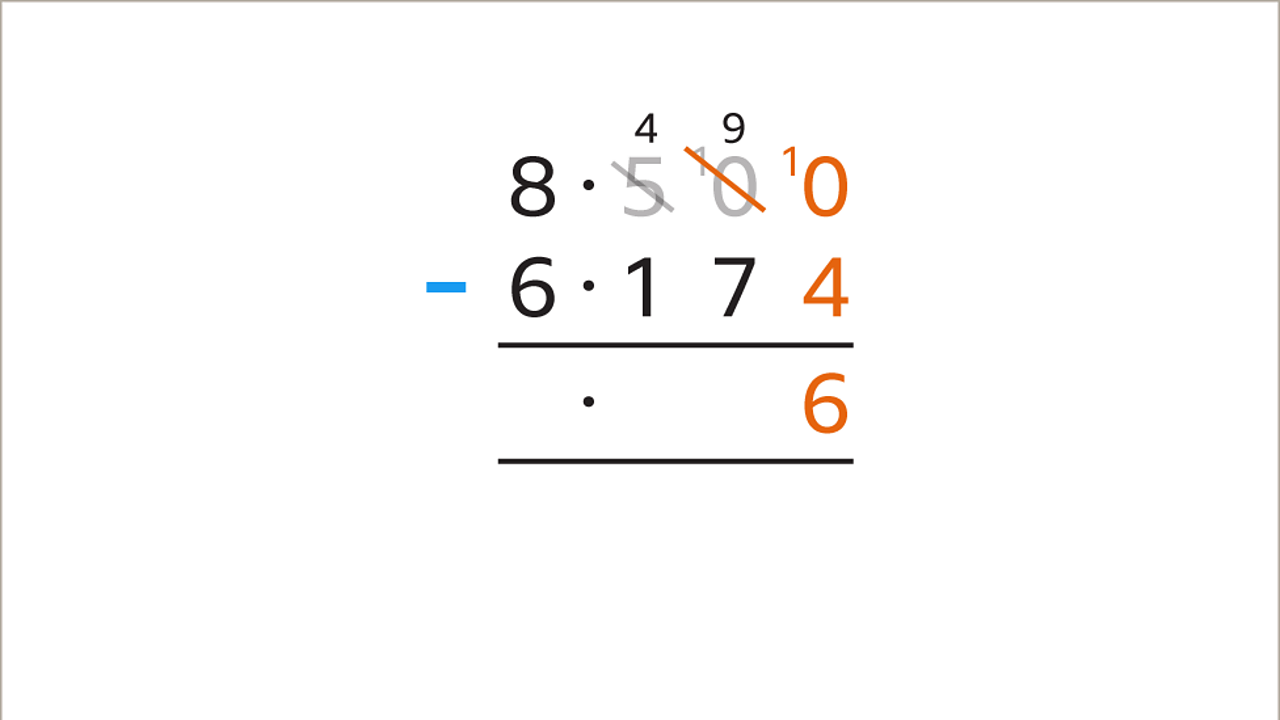
Subtract the bottom digit (4) from the superlative value (10). The respond (half dozen) is entered in the answer infinite. Move left to the next place value cavalcade.

Subtract the lesser digit (vii) from the peak value (9). The respond (two) is entered in the answer infinite. Move left to the next place value column.
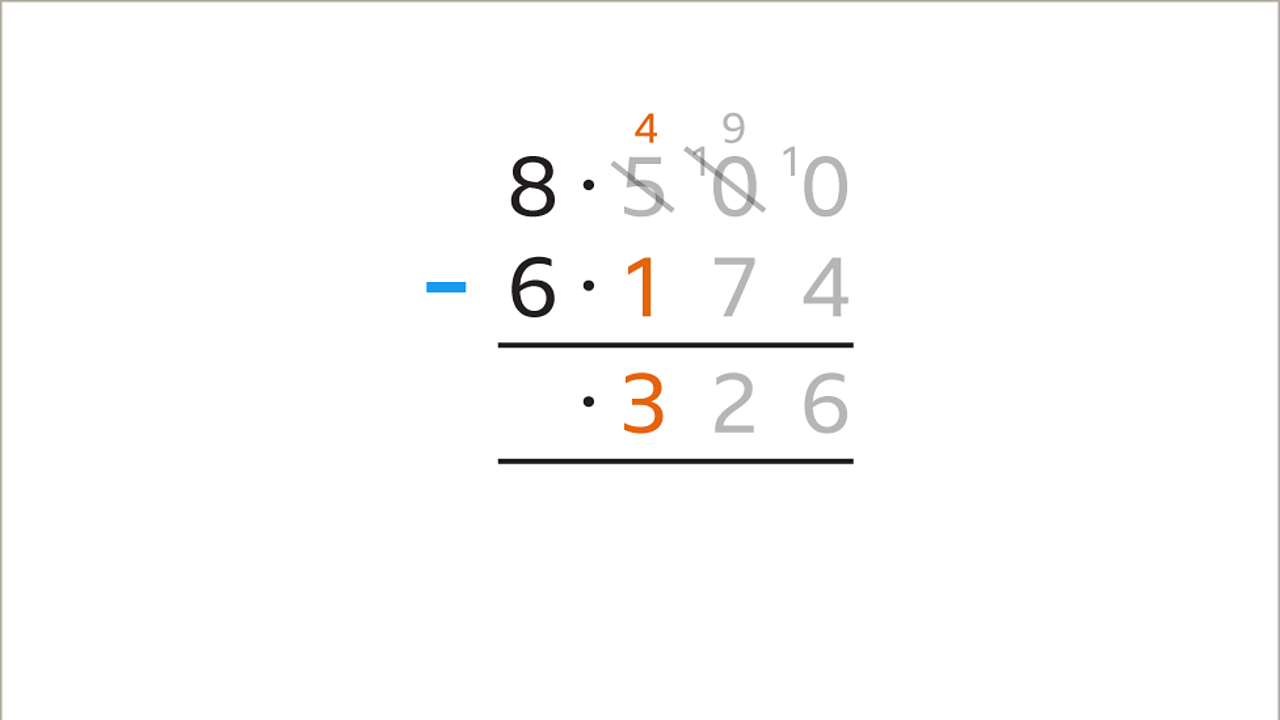
Subtract the bottom digit (ane) from the acme value (4). The answer (3) is entered in the answer space. Move left to the next place value column.
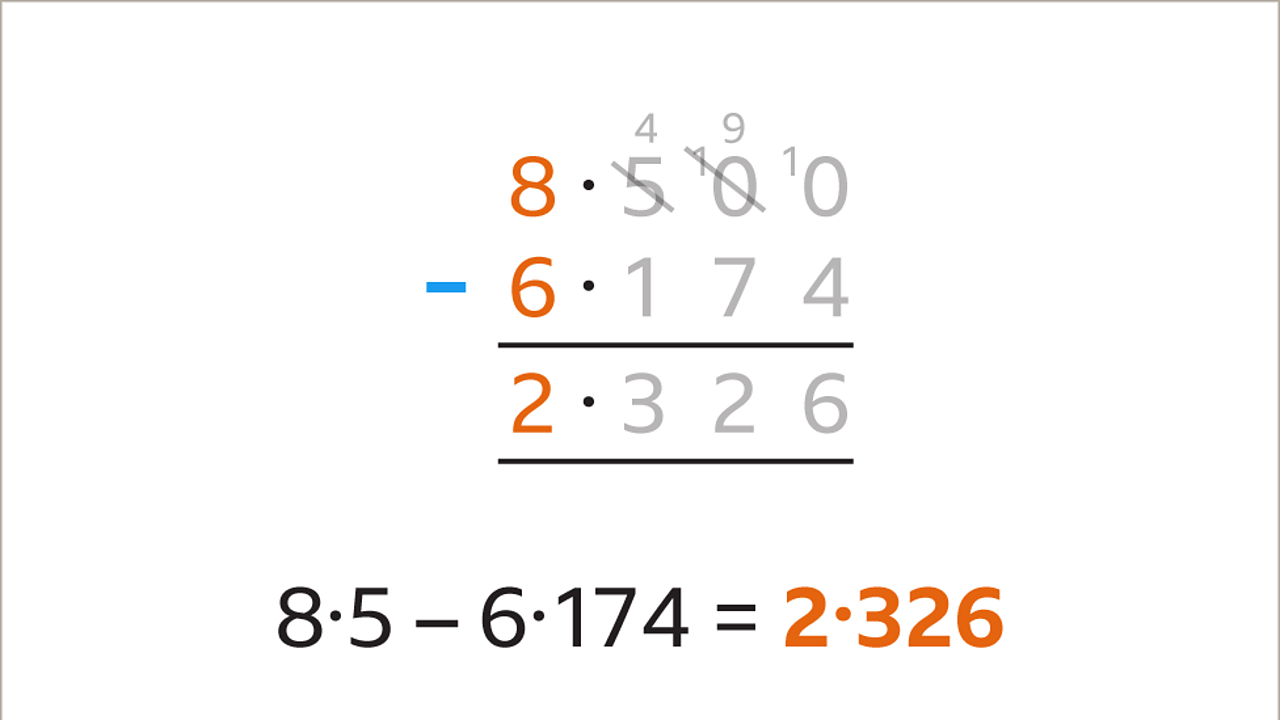
Subtract the bottom digit (vi) from the acme value (8). The respond (ii) is entered in the respond space. The adding is complete. 8∙v – 6∙174 = 2∙326
Practise adding and subtracting decimals
Exercise calculation and subtracting decimals in this quiz. You might need a pen and paper for your working out.
Quiz
Existent-world maths
Calculations that involve money use the addition and subtraction of decimals.
-
Subtraction of decimals can be used to work out how much modify is needed. For example, if an item worth £17.75 is bought with a £20 note, subtraction is used to notice the change required. 20 – 17.75 = 2.25. £2.25 in alter is owed.
-
Improver of decimals can exist used to total the amount of coin spent on several different items. It is useful to keep track of spending when on a budget.
How Do You Add Decimals,
Source: https://www.bbc.co.uk/bitesize/topics/zh7xpv4/articles/zk9bg7h
Posted by: haydenconevenibary.blogspot.com


0 Response to "How Do You Add Decimals"
Post a Comment